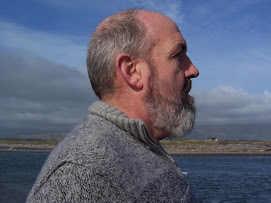There are as many answers to this question as there are communities. The ReadWriteWeb has recently released a unique report on a guide to Online Community Management – for businesses seeking to engage with online communities.
Another example of collective oversight and governance – “of the people by the people” is the recent UK documentary UsNow which gives some pointers.
As we think about the global village, it may be helpful to look to the village as a construct for insights.
Stephen Coleman has suggested we go back to the agora of ancient Greece as a model for connecting parliament to the people. However, the agora as an “open place of assembly for all free-born, male landowners” is less than inclusive, and seems out of line with modern thinking.
Having moved to New Zealand 25 years ago, I have developed an interest in the decision making processes used by the Maori people in developing a collective view, and I think thus may be a useful place to seek a model for the global village. I am not in any way an expert on Maori decision making or protocol, and a number of the ideas that follow have been taken from a paper given by Adelaide Collins to the Australia and New Zealand Third Sector Research conference in 2002.
In New Zealand, Maori culture has been based on the Marae as a meeting place, where different ideas from within the community are brought together, and through discussion and debate, a collective view is developed. The idea of a Marae as a communal home brings to mind the notions of belonging, of community, of privacy, and of the right to control what happens in your own home. This definition can take the meaning of Marae beyond its physical presence to incorporate its social, psychological, emotional, and even spiritual meaning for people.
In Maoridom, each community decides the rules of enfranchisement. Maori communities have a network of groups, organisations and alliances bonded by culture that parallels the wider network of not-for-profit organisations, community organisations and voluntary associations that are established around particular concerns. Marae are one of the most traditional Maori institutions still operating. Defined as a physical or symbolic home for a kin-based group, Marae are primarily made up of three elements that function in a symbiotic fashion to each other: land, community, and whare tipuna (ancestral houses). Maori assume they have rangatiratanga (authority, self-determination, autonomy) over their Marae, their homes. The community organises itself into groups as necessary and these groups are made responsible for a particular aspect of Marae life.
Traditional Maori decision-making is characterised by the following:
Consensus is preferred even if it takes time.
Emotion is expected, vented and tolerated especially when mana is challenged. Reconciliation is then part of the way forward to the consensus decision.
Silence is important and does not mean consent. What is not said is noted.
Consider what could happen if these concepts were translated into cyberspace; how could we adapt the concepts for globally connected community – can we re-use the traditional Maori concepts as metaphors for decision-making in cyberspace?
And, most critically, can it scale to a single global village?

No comments:
Post a Comment